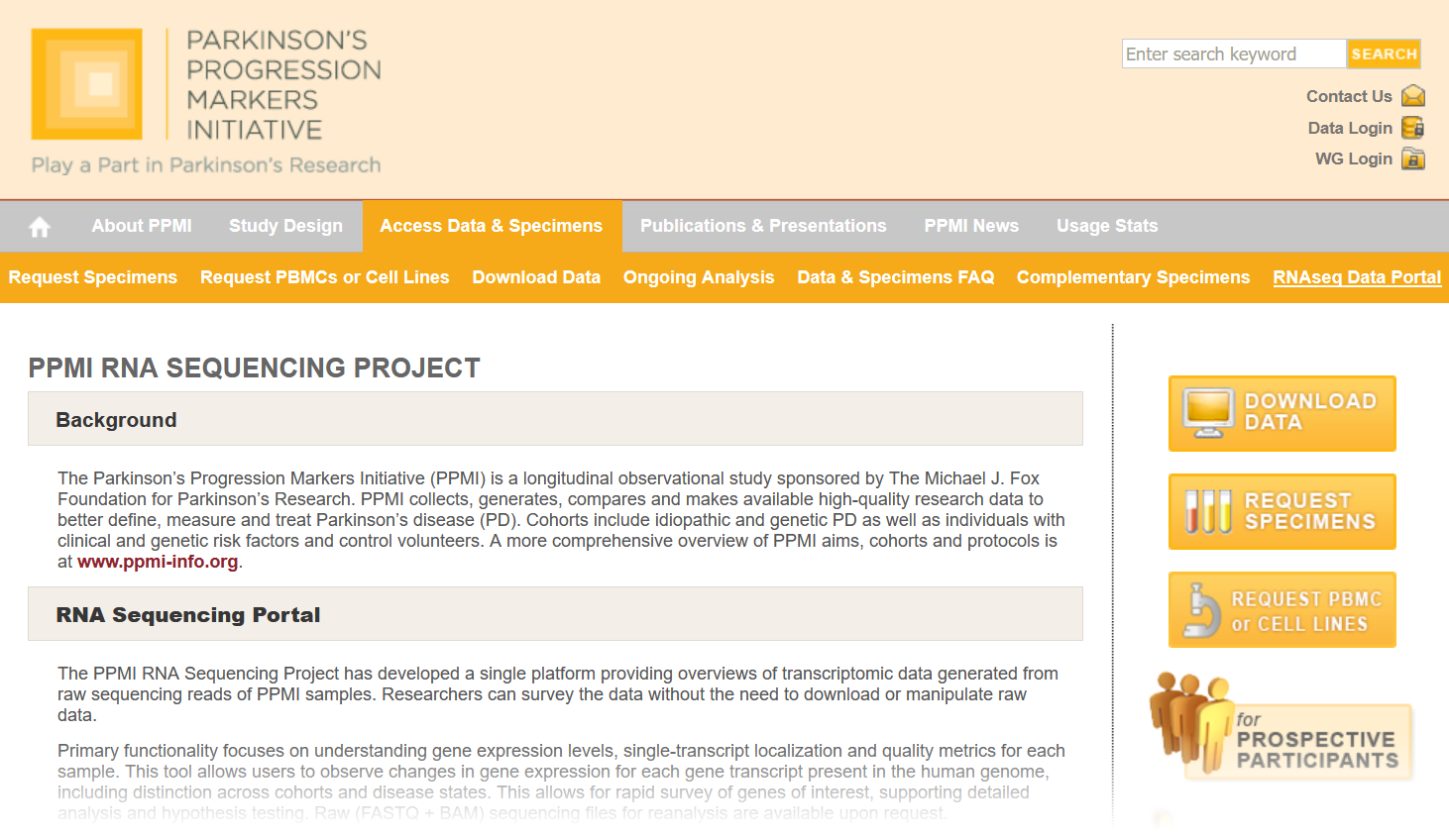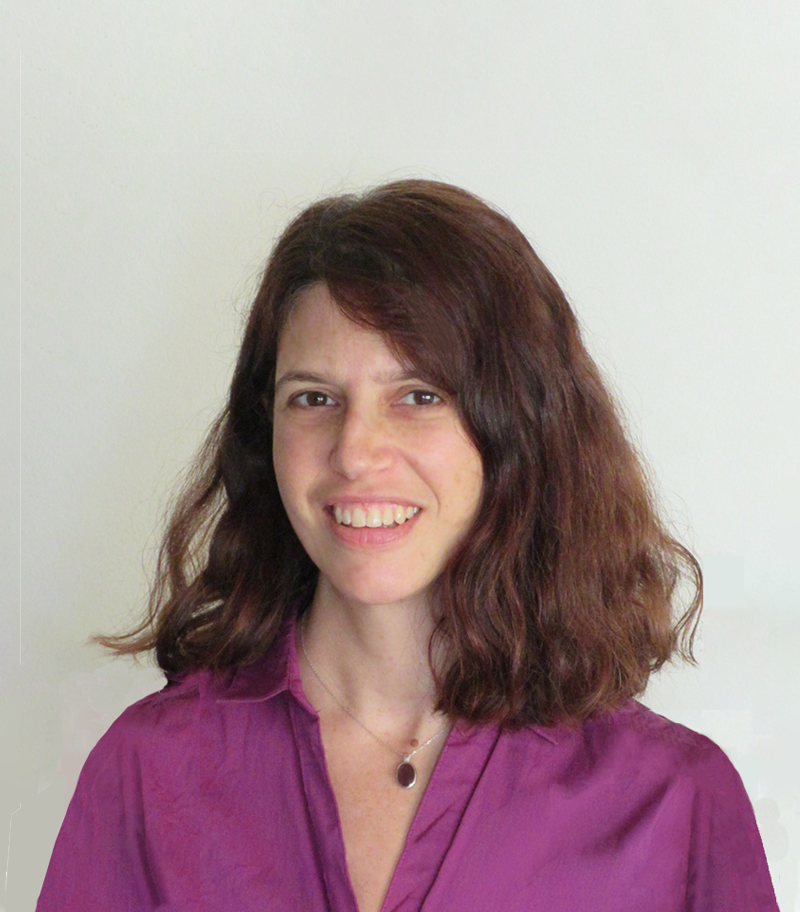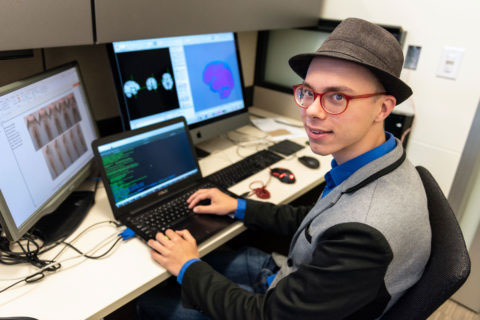USC Mark and Mary Stevens Neuroimaging and Informatics Institute Newsletter / Fall 2019
NEW FINDINGS
Enhancing the Visibility of Perivascular Spaces
In August, an INI-led team that included Farshid Sepehrband, PhD, Giuseppe Barisano, MD, Ryan Cabeen, PhD, Jeiran Choupan, PhD, and Arthur W. Toga, PhD, published a breakthrough study of perivascular spaces (PVS), fluid-filled structures in the brain involved in circulation and waste clearance, in the Nature journal Scientific Reports. Using a new image processing method, the researchers reduced noise and enhanced contrast in MR images of PVS, improving their visibility and allowing more accurate mapping and quantification to aid future research and clinical efforts.
PVS Video
Jim Stanis, INI’s medical animator, created this animation depicting the perivascular spaces (PVS), also known as Virchow-Robin space, which has significant clinical value to support medical diagnosis and enable novel neuroscientific investigations.
10 Years of ENIGMA
INI’s Paul Thompson, PhD, Neda Jahanshad, PhD, Lauren Salminen, PhD, and several staff researchers coauthored a 10-year retrospective of the Enhancing Neuro Imaging Genetics through Meta-Analysis (ENIGMA) consortium, which has fueled a decade of large-scale studies of the brain in health and disease across more than 40 countries. The article discusses the network’s impact, including the progress of more than 50 working groups that pool data to answer fundamental questions about psychiatric and neurological conditions, development and aging, sex differences and more.
New Findings in Epilepsy Bioinformatics Study
INI researchers Rachael Garner, Marianna La Rocca, PhD, Giuseppe Barisano, MD, Arthur W. Toga, PhD, and Dominique Duncan, PhD, worked with UCLA’s Paul Vespa, MD, to build a machine learning model that uses resting-state fMRI to classify traumatic brain injury patients who have experienced a seizure within six months of their injury and patients who have had no seizures. The study, which was published in the proceedings of the 2019 Spring Simulation Conference, is the first to use machine learning to perform such a posttraumatic epilepsy classification in a patient-only cohort.
Learn more about the Epilepsy Bioinformatics Study for Antiepileptogenic Therapy
Testing Virtual Reality Neurofeedback for Stroke Rehabilitation
INI’s Sook-Lei Liew, PhD, published a pilot study of REINVENT, a platform that combines virtual reality with a brain-computer interface to strengthen motor pathways and support recovery in patients who have experienced strokes. Her team found that patients with severe motor impairments benefitted from rehabilitation work with REINVENT.
INI Findings Featured in Leading MR Journal
A recent study led by INI's Xingfeng Shao and Danny JJ Wang, PhD, was chosen as the monthly editor's pick for the journal Magnetic Resonance in Medicine in May. This video includes slides and a detailed explanation of the paper's findings, which used a new algorithm to measure the movement of water across the blood-brain barrier and explored how it might benefit elderly patients at risk of developing cerebral small vessel disease.
INI Launches New Data Portal for Parkinson’s Disease
In collaboration with the Michael J. Fox Foundation for Parkinson’s Research and David W. Craig, PhD, of USC’s Department of Translational Genomics, the INI has built and shared a new interactive data portal for the landmark Parkinson’s Progression Markers Initiative (PPMI). The big-data study has now added RNA sequencing data to its massive cache of clinical, biological, and imaging data from a group of 1,400 individuals over more than five years. The INI stores all of the project’s data, along with data from more than 50,000 additional subjects across 125 different large-scale studies.
New Initiatives
New Realities at the INI
On October 1, the institute released a revolutionary augmented reality (AR) smartphone application, Schol-AR, that allows users to explore 3D, interactive visualizations embedded in journal articles, conference posters, and promotional materials. The new technology, built at the INI by Tyler Ard, PhD, will also host materials from other researchers across USC and beyond and represents a breakthrough new way of engaging with scientific data that holds potential for significant collective impact within the field of neuroscience and beyond.
Other Progress in Scientific Visualization
INI’s medical animator Jim Stanis and postdoctoral scholar Ryan Cabeen, PhD, collaborated to create a sophisticated animation depicting the brain’s white matter fibers, which won second place in the NIH BRAIN Initiative’s 2019 “Show Us Your Brain” contest. The stunning video was also featured on the NIH Director’s Blog in August.
Yonggang Shi Receives NIH Funding for Alzheimer’s Research
Yonggang Shi, PhD, received a new grant to study the link between Alzheimer’s disease (AD) pathology and the degeneration of the brain’s reward network. He and his team will use connectome imaging data to map the reward network, then assess how related neuropsychiatric symptoms—such as depression, apathy and anxiety--relate to tau deposition and connectivity changes in AD patients. All computational tools created will be freely distributed to the research community.
USC Collaboration Fund Backs VR Research
INI’s Sook-Lei Liew, PhD, and her team at the USC Sensorimotor Assessment and Rehabilitation Training in Virtual Reality (SMART-VR) Center have received a grant from the USC Collaboration Fund to expand the center’s work with stroke survivors, people with posttraumatic stress disorder and Alzheimer’s disease patients.
“We aim to be a complete ecosystem for VR researchers, educators and clinicians, and to make USC a leader in driving forward scientifically rigorous and clinically impactful VR and AR applications,” - Sook-Lei Liew, PhD
Training and Outreach
INI Names New Director of Education
On August 1, Meredith Braskie, PhD, assistant professor of neurology at the INI, was named the institute’s new Director of Education. Dr. Braskie will oversee the Master of Science in Neuroimaging and Informatics program as well as the institute’s range of training and outreach initiatives for students and professionals. One of her initiatives for the next year involves providing additional informatics and data analytics training to students.
Sook-Lei Liew Mentors Aspiring Neuroscientist
INI’s Sook-Lei Liew was featured in Fast Forward Girls, a new YouTube series from children’s multimedia company GoldieBlox. She shared her research on virtual reality for stroke rehabilitation with Bailey Ballinger, an aspiring neuroscientist, in an episode that was viewed more than 750,000 times.
INI Trainee Publishes First Journal Article
Shaina Sta. Cruz, a recent graduate of California State University, Fullerton and participant in INI’s Big Data Discovery and Diversity through Research Education Advancement and Partnerships (BD3-REAP) program, which trains undergraduate students in big data science, achieved lead authorship on her first peer-reviewed paper in May. She worked with her INI mentors, Farshid Sepehrband, PhD, and Hosung Kim, PhD, to test a machine learning alternative to the long and laborious process of correcting errors that occur during the automated processing of brain scan data.
INI Researcher Explores Link Between Transgender Brain and Gender Identity
Jonathan Vanhoecke, who graduated from INI’s Master of Science in Neuroimaging and Informatics (NIIN) program in May, is studying the brain structure of transgender people to help tailor care and support. He’s now working with the Enhancing Neuro Imaging Genetics through Meta-Analysis (ENIGMA) consortium, incorporating a big data perspective to better understand differences between cisgender and transgender participants.
Other Training & Outreach Efforts
- Students from California State University, Fullerton who were part of the Big Data Discovery and Diversity through Research Education Advancement and Partnerships (BD3-REAP) program presented their summer research on neuroimaging and data science to the institute’s faculty and staff.
- Students from the neighboring Francisco Bravo Medical Magnet High School attended a day of tours and presentations at the institute to learn about careers in neuroscience and opportunities at the INI.
- The USC Bovard Scholars, a group of high-achieving, low-income high school students selected for a summer residency at USC, attended a daylong seminar at the institute. The event included panel discussions, demonstrations and networking opportunities with INI faculty and staff researchers.
- The Global Alzheimer's Association Interactive Network (GAAIN) team attended the 2019 Alzheimer's Association International Conference in Los Angeles, providing information and tutorials of the data-finding tool to Alzheimer's and dementia researchers.
people
Vishal Patel Joins the INI Faculty
Vishal Patel, MD, PhD, joined the INI faculty as an assistant professor of radiology in July. Dr. Patel, who earned his doctoral degree in biomedical engineering and completed a residency in diagnostic radiology at UCLA, studies MRI, diffusion imaging, tractography and machine learning. At the INI, he plans to apply his knowledge of computational MRI and artificial intelligence to improve diagnostic techniques for neuroradiologists.
Lauren Salminen Joins the INI Faculty
Lauren Salminen, PhD, joined the INI faculty as an instructor of research neurology. After completing her doctoral degree in Behavioral Neuroscience at the University of Missouri – St. Louis, Dr. Salminen worked at the INI as a postdoctoral research fellow studying brain aging and other topics.
Our Featured Postdocs
Talia Nir
Talia Nir completed her PhD in neuroscience at USC, where she evaluated the utility and sensitivity of novel structural neuroimaging methods to detect neurodegenerative brain processes in HIV and Alzheimer's disease. She is the co-chair of the ENIGMA HIV working group, which aims to identify reliable biomarkers of HIV neuropathology that are generalizable across demographically and clinically heterogeneous HIV-infected individuals worldwide. She is particularly interested in understanding whether common age and HIV-related pathological processes further facilitate neurocognitive degeneration associated with aging and AD.
Junyan Wang
Junyan Wang earned his PhD from Nanyang Technological University in Singapore. His research interests lie mainly in computational anatomy using large-scale neuroimaging datasets and its applications in clinical brain research for visual impairment, mental disorders and Alzheimer's disease.
Soroush Pahlavian
Soroush Pahlavian received his doctoral degree in mechanical engineering from the University of Akron. While completing his doctorate, he used MR imaging in conjunction with computational and experimental biomechanics to evaluate neurological disorders such as Chiari malformation and Syringomyelia. His current research at INI focuses on using phase-contrast based MRI sequences to quantify novel biomarkers for the assessment of cerebrovascular pulsatility and compliance in cognitively impaired patients. He is also developing a post-processing algorithm for semi-automated territorial segmentation and perfusion quantification of cerebral vessels.
Check back in the Spring to meet three more of our postdocs.
INI In The News
Scientists Study Whether Virtual Reality Can Prevent Cognitive Decline, Dementia
Massive Parkinson Disease Database Adds RNA Sequencing Data
The US Government Botched Its Investigation Into The Mysterious “Sonic Attack” In Cuba, Emails Reveal
Learn more about our research
Visit us online at www.ini.usc.edu.
Keck School of Medicine of USC
University of Southern California
323-44-BRAIN (323-442-7246)



